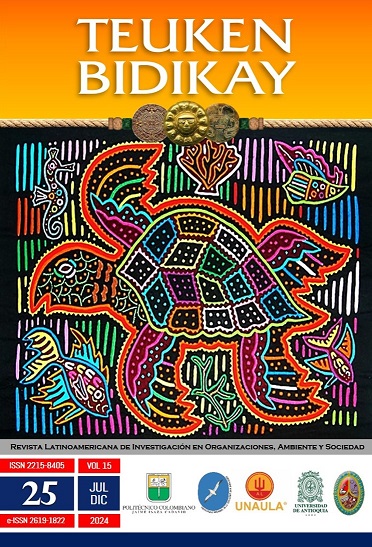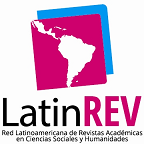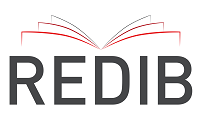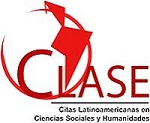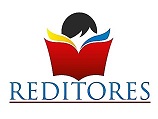Finanzas sostenibles y cadena de valor: contexto de las empresas turísticas en Colombia.
DOI:
https://doi.org/10.33571/teuken.v15n25a3Palabras clave:
Finanzas Sostenibles, Cadenas de Valor, Empresas TurísticasResumen
Las Finanzas Verdes (FV) aplicadas en la Cadena de Valor (CV) para las empresas turísticas son una oportunidad para darle valor agregado a su actividad económica como parte central del crecimiento verde y reducir la huella del carbono como aporte a los Objetivos del Desarrollo Sostenible (ODS) y fortalecer más un turismo sostenible, porque conectan las empresas turísticas hacia la utilización de mecanismos e instrumentos para cambiar las situaciones del actual entorno y generar un impacto positivo en la sociedad, el medio ambiente y un crecimiento económico. El objetivo de este artículo es conectar las finanzas verdes en la CV en las empresas turísticas para equilibrar la depreciación ecológica debida a la asimilación de gases de carbono en la atmósfera.
Dentro de los objetivos específicos se tiene como las Finanzas Verdes van a contribuir desde los procesos y actividades estratégicas más relevantes generan soluciones de las problemáticas sociales y ambientales a través de su cadena de valor proyectando una sostenibilidad a las empresas turísticas y dan aportes a los ODS 2015-2030.
Métricas de artículo
Resumen: 201 PDF: 77Métricas PlumX
Citas
Arroyo, P.; Morote,J.; Ruiz, C. y Rubio, P. (2004). Turismo en la región de Murcia 2003. Imprenta Regional. https://www.carm.es/web/pagina?IDCONTENIDO=2094&IDTIPO=246&RASTRO=c619$m11530
Bertram, D. (2008). Likert Scales... are the meaning of life. CPSC 681 – Topic report. https://www.academia.edu/8160815/Likert_Scales_are_the_meaning_of_life
Brander, M. (2022). There should be more normative research on how Social and Environmental Accounting should be done. Social and Environmental Accountability Journal, 42(1-2),11-17. https://doi.org/10.1080/0969160X.2022.2066554 DOI: https://doi.org/10.1080/0969160X.2022.2066554
Colciencias. (2018). El libro verde 2030. Política nacional de ciencia e innovación para el desarrollo sostenible. Gobierno de Colombia. https://www.minciencias.gov.co/sites/default/files/libroverde2030-5julio-web.pdf
Dilip, K. & Rajeev, P. (2016). Value chain: a conceptual framework. International Journal of Engineering and Management Sciences, 7(1), 74-77. https://www.researchgate.net/publication/325110680_Value_Chain_A_Conceptual_Framework
Department for Business, Energy & Industrial Strategy. (2019). Transforming finance for a greener future: 2019 green finance strategy. United Kingdom Government. https://www.gov.uk/government/publications/green-financestrategy/transforming-finance-for-a-greener-future-2019-green-finance-strategy
European Business School [CEUPE]. (2022). Certificaciones del turismo sostenible. https://www.ceupe.com/blog/certificaciones-del-turismo-sostenible.html
George, C. (2019). Estrategia metodológica para elaborar el estado da arte como un producto de investigación educativa. Praxis Educativa, 23(3), 1-12. https://dx.doi.org/10.19137/praxiseducativa-2019-230307 DOI: https://doi.org/10.19137/praxiseducativa-2019-230307
Hernández, R.; Fernández, C. y Baptista, M. (2010). Metodología de la investigación. Mc. Graw Hill.
Höhne, N., Khosla, S., Fekete, H. & Gilbert, A. (2012). Mapping of Green Finance Delivered by IDFC Members in 2011. Ecofys. https://www.idfc.org/wp-content/uploads/2019/03/idfc_green_finance_mapping_report_2012_06-14-12.pdf
Hutaibat, K. (2011). Value Chain for Strategic Management Accounting in Higher Education. International Journal of Business and Management, 6(11): 206-218. https://doi.org/10.5539/ijbm.v6n11p206 DOI: https://doi.org/10.5539/ijbm.v6n11p206
Instituto Colombiano de Normas Técnicas y Certificación [ICONTEC]. (2018). NTC ISO 14031:2015. Gestión Ambiental. Evaluación del desempeño ambiental. Directrices. Icontec.). https://pdfcoffee.com/norma-ntc-iso-14031-pdffree.html
International Finance Corporation [IFC]. (2016). Green Finance: A bottom-up approach to track existing flows. https://www.cbd.int/financial/gcf/ifc-greentracking.pdf
Investopedia (2020). Value Chain: Definition, Model, Analysis, and Example. https://www.investopedia.com/terms/v/valuechain.asp.
ISO Tools Excellence. (2015). Norma ISO 14001:2015. https://www.nueva-iso-14001.com/pdfs/FDIS-14001.pdf
Kahlenborn, W., Cochu, A., Georgiev, I., Eisinger, F. & Hogg, D. (2017). Defining "green" in the context of green finance. Final report. European Commission: Directorate-General for Environment. Publications Office. https://data.europa.eu/doi/10.2779/285586
Kestin, T. (Coord.) (2017). Getting started with the SDGs in universities: A guide for universities, higher education institutions, and the academic sector. Australia, New Zealand and Pacific Edition. Sustainable Development Solutions Network SDSN Australia/Pacific. https://ap-unsdsn.org/wp-content/uploads/University-SDG-Guide_web.pdf
Liévano T., K.; Mazó Q., M.; Torres M., F. (2018). Percepción y planificación del turismo sostenible en comunidades indígenas de México. Revista de Ciencias de la Administración y Economía, 8(15). DOI: https://doi.org/10.17163/ret.n15.2018.08
Madera, J., Dawson, M., Guchait, P. & Belarmino, A. (2017). Strategic human resources management research in hospitality and tourism: A review of current literature and suggestions for the future. International Journal of Contemporary Hospitality Management, 29(1), 48–67. https://doi.org/10.1108/IJCHM-02-2016-0051. DOI: https://doi.org/10.1108/IJCHM-02-2016-0051
Makkar, U., Gabriel, E. & Tripathi, S. (2008). Value chain for higher education sector case studies of India and Tanzania. Journal of Services Research, special issue(feb), 183-200. https://ssrn.com/abstract=2622858
Miličević, K. (2021). Tourism value chain and sustainability certification. Labelscape. Integration of sustainability labels into Mediterranean tourism policies. https://sustainablelabels.eu/wp-content/uploads/2021/07/2_Valuechain_K.Milicevic.pdf
Ministerio de Comercio, Industria y Turismo [Mincit]. (2019). Ajuste cifra de visitantes extranjeros. Gobierno de Colombia. https://www.mincit.gov.co/getattachment/estudios-economicos/estadisticas-e-informes/informes-de-turismo/ajuste-cifra-de-visitantes-extranjeros/ajuste-cifra-visitantes-vf-pagina-web.pdf.aspx
Ministerio de Comercio, Industria y Turismo [Mincit]. (2020). Prestadora de servicios turísticas certificados. Gobierno de Colombia. https://www.mincit.gov.co/minturismo/calidad-y-desarrollo-sostenible/calidad-turistica/prestadores-de-servicios-turisticos-certificados
ONU Turismo. (2022, 18 de enero). El turismo crece un 4% en 2021, muy por debajo aún de los niveles prepandémicos. https://www.unwto.org/es/news/el-turismo-crece-un-4-en-2021-muy-por-debajo-aun-de-los-niveles-prepandemicos.
Organización de Naciones Unidas [ONU]. (2002). La Cumbre de Johannesburgo. de Conferencia las Naciones Unidas sobre el Medio Ambiente y el Desarrollo [CNUMAD]. http://www.un.org/spanish/conferences/wssd/basicinfo.html
Organización de Naciones Unidas [ONU]. (2012). Sustainable Development Goals. https://rio20.un.org/sites/rio20.un.org/files/a-conf.216-l-1_spanish.pdf.pdf
Organización de Naciones Unidas [ONU]. (2015). Objetivos Desarrollo del Milenio. https://research.un.org/es/docs/dev/2000-2015
Organización de Naciones Unidas [ONU]. (2022). ODS en acción. https://www.undp.org/es/sustainable-development-goals
Organization for Economic Cooperation and Development [OECD]. (2018). Tourism Trends and Policies. OECD Publishing. https://www.oecd-ilibrary.org/urban-rural-and-regional-development/oecd-tourism-trends-and-policies-2018_tour-2018-en
Padilla, R. y Oddone, N. (2016). Manual para el fortalecimiento de cadenas de valor. Comisión Económica para América Latina [CEPAL]. https://repositorio.cepal.org/bitstream/handle/11362/40662/1/S1601085_es.pdf
Pathak, V. & Pathak, K. (2010). Reconfiguring the higher education value chain. Management in Education, 24(4), 166-171. https://doi.org/10.1177/0892020610376791 DOI: https://doi.org/10.1177/0892020610376791
Pricewaterhouse Coopers Consultants [PWC]. (2014). Exploring Green Finance Incentives in China.
van der Merwe, A. & Cronje, J. (2004). The educational value chain as a modelling tool in re-engineering efforts (Conference). ISICT’04: Proceedings of the 2004 international Symposium on information and Communication Technologies, Las Vegas.
Vejzagic, V.; Jankovic, S. & Persic, M. (2012). Challenges of Environmental Accounting in Tourism Destination as a Trend of Sustainable Development (pp. 231-243). Business Strategy and Sustainability. DOI: https://doi.org/10.1108/S2043-0523(2012)0000003015
Volz, U., Böhnke, J., Knierim, L., Richert, K. Röber, G. & Eidt, V. (2015). Financing the green transformation. How to Make Green Finance Work. German Development Institute. DOI: https://doi.org/10.1057/9781137486127
Weber, O. & Oni, O. (2016). The impact of financial sector sustainability regulations on banks. Cigi Papers, (77), https://doi.org/10.13140/RG.2.1.1874.4409.
Zadek, S. & Flynn. C. (2013). South-Originating Green Finance: Exploring the Potential. Geneva International Finance Dialogues.
Zúñiga, A. y Guarín, J. (2017). Bioeconomía y contabilidad ambiental. Sinapsis, 9(1), 64-72. https://app.eam.edu.co/ojs/index.php/sinapis/article/view/7/30
Descargas
Publicado
Cómo citar
Número
Sección
Licencia
Derechos de autor 2025 Jairo Humberto Guarín Echeverri

Esta obra está bajo una licencia internacional Creative Commons Atribución-NoComercial-CompartirIgual 4.0.


